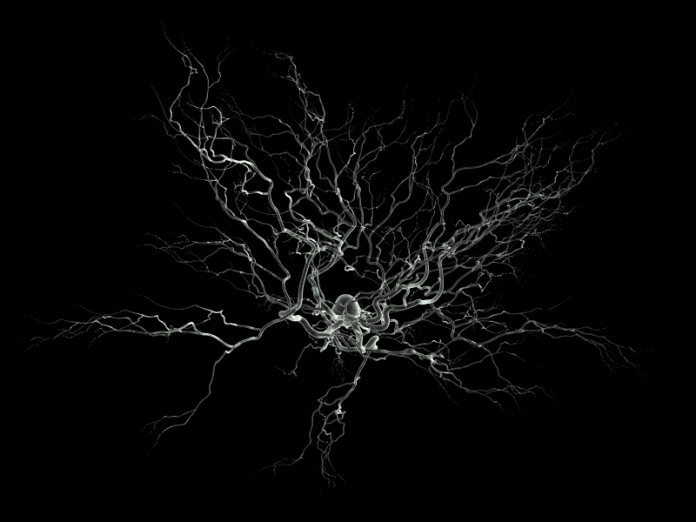Scientists have developed a 3D bioprinting platform that assembles functional เป็นมนุษย์ neural tissues. The progenitor cells in the printed tissues grow to form neural circuits and make functional connections with other neurons thus mimicking natural สมอง tissues. This is a significant progress in neural tissue engineering and in 3D bioprinting technology. Such bioprinted neural tissues can be used in modelling เป็นมนุษย์ diseases (such as Alzheimer’s, Parkinson’s etc.) caused due to impairment of neural networks. Any investigation of disease of brain requires understanding how the เป็นมนุษย์ neural networks operate.
การพิมพ์ชีวภาพ 3 มิติ เป็นกระบวนการเติมแต่งโดยนำวัสดุชีวภาพจากธรรมชาติหรือสังเคราะห์ (bioink) ที่เหมาะสมมาผสมกับเซลล์ที่มีชีวิตและพิมพ์ออกมาทีละชั้นในโครงสร้างสามมิติที่มีลักษณะเหมือนเนื้อเยื่อตามธรรมชาติ เซลล์เติบโตใน bioink และโครงสร้างพัฒนาเพื่อเลียนแบบเนื้อเยื่อหรืออวัยวะตามธรรมชาติ เทคโนโลยีนี้ได้ค้นพบการใช้งานใน ที่เกิดใหม่ medicine for bioprinting of cells, tissues and organs and in research as model to study เป็นมนุษย์ ร่างกาย ในหลอดทดลองโดยเฉพาะ เป็นมนุษย์ ระบบประสาท.
การศึกษาของ เป็นมนุษย์ nervous system faces limitations due to unavailability of primary samples. Animal models are helpful but suffer from species-specific differences hence the imperative of ในหลอดทดลอง แบบจำลองของ เป็นมนุษย์ nervous system to investigate how the เป็นมนุษย์ neural networks operate towards finding treatments for diseases attributed to impairment of neural networks.
คน neural tissues have been 3D printed in the past using stem cells however these lacked neural network formation. The printed tissue had not shown to have formed connections between cells for several reasons. These shortcomings have been overcome now.
ในการศึกษาล่าสุด นักวิจัย chose fibrin hydrogel (consisting of fibrinogen and thrombin) as the basic bioink and planned to print a layered structure in which progenitor cells could grow and form synapses within and across layers, but they changed the way layers are stacked during printing. Instead of traditional way of stacking layers vertically, they chose to print layers next to another horizontally. Apparently, this made the difference. Their 3D bioprinting platform was found to assemble functional เป็นมนุษย์ neural tissue. An improvement over other existing platforms, the เป็นมนุษย์ neural tissue printed by this platform formed neural networks and functional connections with other neurons and glial cells within and between layers. This is the first such case and is a significant step forward in neural tissue engineering. Laboratory synthesis of nerve tissue that mimics brain in function sounds exciting. This progress will certainly help researchers in modelling เป็นมนุษย์ diseases of brain caused due to impaired neural network to better understand the mechanism for finding a possible treatment.
***
อ้างอิง:
- กาเดนา เอ็ม., อัล et 2020 การพิมพ์ทางชีวภาพแบบ 3 มิติของเนื้อเยื่อประสาท วัสดุการดูแลสุขภาพขั้นสูง เล่มที่ 10 ฉบับที่ 15 2001600 DOI: https://doi.org/10.1002/adhm.202001600
- ยัน วาย. อัล et 2024. 3D bioprinting of เป็นมนุษย์ neural tissues with functional connectivity. Cell Stem Cell Technology| Volume 31, Issue 2, P260-274.E7, February 01, 2024. DOI: https://doi.org/10.1016/j.stem.2023.12.009
***






































